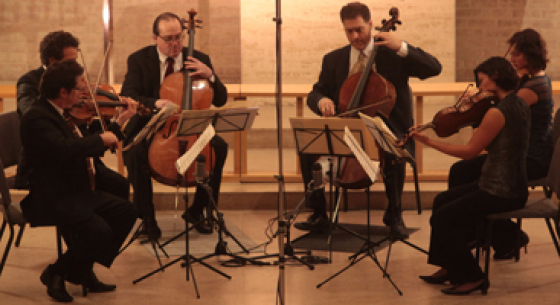On Haydn, Mozart, and Hungarian Sandwiches
Editor’s note: The following is a guest post from Accordo member Kyu-Young Kim, featuring Accordo’s upcoming concert, An Evening in Austria-Hungary, on Mon, Oct 15, 7:30 pm at Christ Church Lutheran, as presented by The Schubert Club, Northrop Concerts and Lectures, and Kate Nordstrum Projects.
by Kyu-Young Kim
I imagine that many of the readers of this blog are aware of the current labor strife in both the Minnesota Orchestra and the Saint Paul Chamber Orchestra. For all of us in Accordo, these have been strange, troubling times. Having just moved back to the Twin Cities last fall after a six-year stint in New York City, I had been enjoying my return to the vibrant classical music scene here until Orchestral Armageddon reared its ugly head. Fortunately we have this first Accordo concert to look forward to and it's a great, uplifting program.
You could call it a Hungarian sandwich with some very substantial Austrian bread. The Dohnanyi “Serenade” for violin, viola, and cello is certainly a tasty treat, full of rich sonorities, beautiful melodies, a catchy march, and virtuosic turns for each instrument. To continue the sandwich analogy, a brief sampling of Bartók's “Duos for Two Violins” makes for a nice, spicy condiment. Bartók wrote the 44 “Duos” as a pedagogical tool for young violinists, but he invested them with his love of the folk music of his native Hungary and surrounding countries. Bartók transformed folk dances and songs into works of art, not by copying or quoting, but by absorbing folk music into his compositional blood stream. He spent years traveling through the Hungarian countryside, living among the peasants and collecting thousands of folk songs. In these “Duos,” the folk music comes out very directly, with only subtle transformations.
The Haydn and Mozart pieces that bookend the program represent the two composers at the height of their powers. (You'll be relieved to know that I'm putting an end to the sandwich analogy. I just love these pieces too much to compare them to bread.) The Haydn “String Quartet in G Major, Op. 77, No. 1” comes from his last set of completed quartets, published in 1802, one year after the Op. 18 quartets of his sometimes student, Beethoven. As much as I love Beethoven's Op. 18 quartets, I think the old master outdid his rebellious student in this Viennese throw down. In Beethoven, you can always hear the struggle, which is such a big part of what makes it so emotionally powerful; the Op. 18 quartets still have all the trappings of the high classical style of Mozart and Haydn, and sometimes the sense of struggle doesn't fit the music the way it does in the later quartets. Haydn's “ Op. 77” is the work of a man with nothing left to prove, full of inventiveness, humor, bravado, tenderness, and sheer joy.
Mozart wrote his “Viola Quintet in C major, K. 515” in 1787, the same year he wrote “Don Giovanni.” While taking a break from his operatic composing, he composed this quintet and it's altar ego, the “G minor Quintet, K. 516,” in a span of just a few weeks. These two works are arguably Mozart's greatest chamber works. For some reason, the viola quintet (meaning a quintet comprised of 2 violins, 2 violas, and a cello) represented the perfect medium for Mozart to explore the conversational possibilities of a chamber music composition. The extra viola (which also happened to be the instrument Mozart played when he played chamber music) gives the sonority more fullness without losing the effervescence and transparency of Mozart's textures. Mozart takes obvious delight in all of the various ways he combines the five voices. The only time he really takes a break from mixing up the duos and trios and quartets within the quintet is in the slow movement which is really an aria for first violin and first viola. Playing this glorious love song, and all of the other inspired compositions on this first Accordo program, will certainly be a musical highlight of the fall season for all of us in Accordo.
Thanks for reading and looking forward to seeing you at the concert!
